Core Web Vitals Metrics: What is Largest Contentful Paint (LCP)?
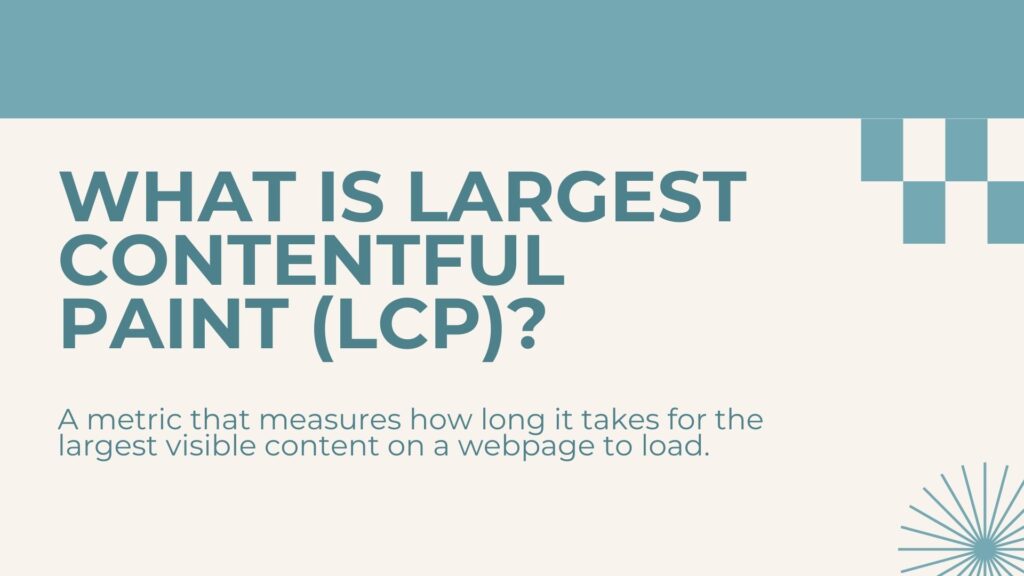
When it comes to improving your website’s performance, Core Web Vitals are some of the most important metrics to focus on. These metrics, introduced by Google, measure key aspects of a website’s user experience and play a big role in how your site ranks in search results. One of the most important Core Web Vitals is Largest Contentful Paint (LCP).
In this blog post, we’ll explain what LCP is, why it matters for SEO, and how you can improve it to create a better experience for your visitors.
In this article:
- What Is Largest Contentful Paint (LCP)?
- Why Is LCP Important?
- What Is a Good LCP Score?
- How Is LCP Measured?
- Factors That Affect LCP
- How to Improve LCP
What Is Largest Contentful Paint (LCP)?
Largest Contentful Paint (LCP) is a metric that measures how long it takes for the largest visible content on a webpage to load. This content is usually an image, a video, or a block of text that appears above the fold (the part of the webpage visible without scrolling).
For example:
- On a blog post, the LCP might be the headline or the featured image.
- On an e-commerce product page, the LCP could be the product image or the price.
LCP gives users a sense of how quickly the main content on a page is displayed, which directly impacts their first impression of your site.
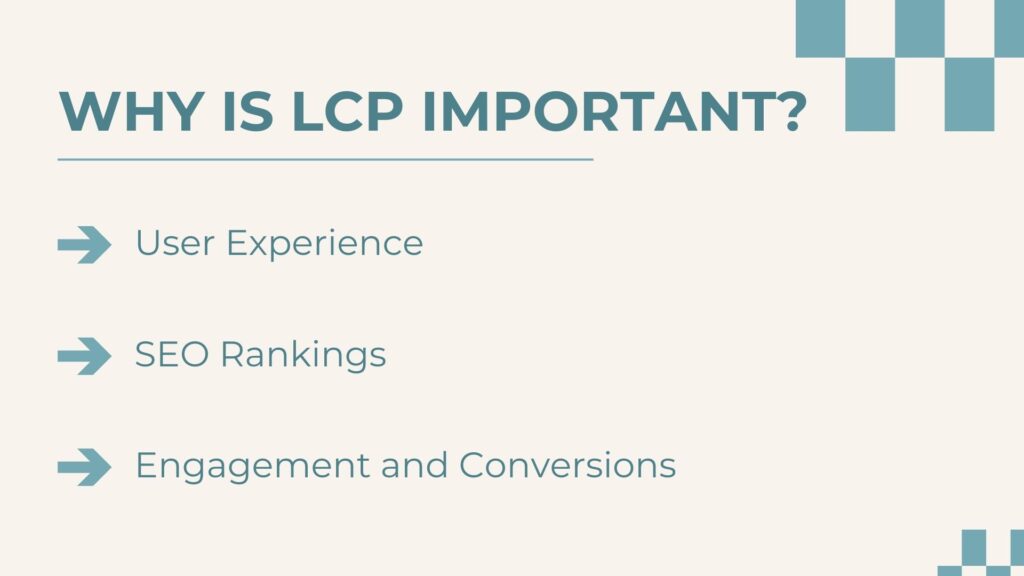
Why Is LCP Important?
LCP matters because it directly affects user experience and search engine optimization (SEO). A slow LCP can frustrate visitors and cause them to leave your site, leading to higher bounce rates and lower rankings.
Here are a few reasons why LCP is crucial:
1. User Experience
When users visit your site, they want the main content to load quickly. A fast LCP ensures that visitors can see and interact with your website without unnecessary delays.
2. SEO Rankings
Google uses Core Web Vitals, including LCP, as a ranking factor. Websites with fast load times are more likely to rank higher in search results, which can drive more traffic to your site.
3. Engagement and Conversions
A faster LCP can lead to better user engagement and higher conversions. Whether you want users to read your content, sign up for a newsletter, or make a purchase, a fast LCP encourages them to stay on your site and take action.
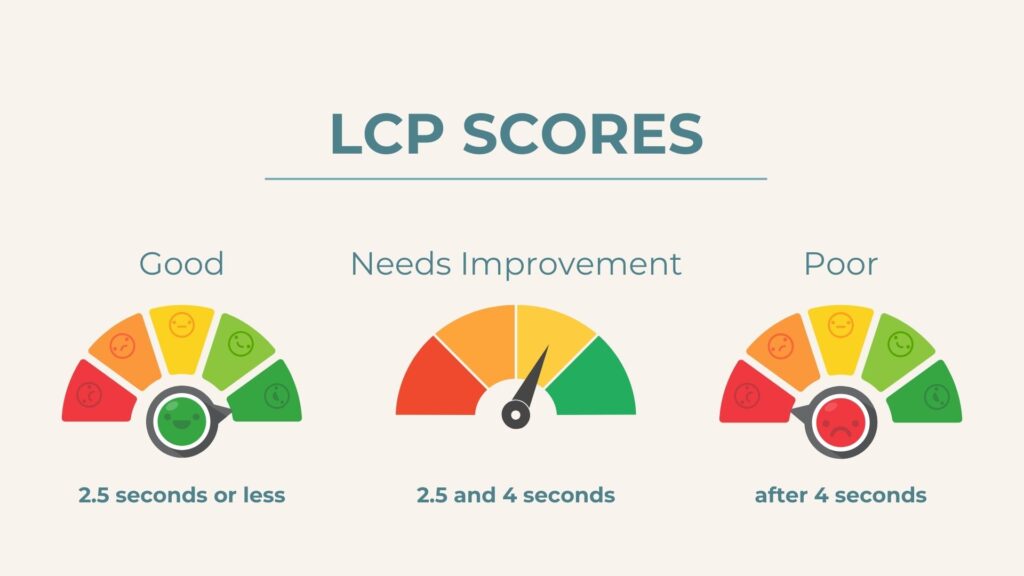
What Is a Good LCP Score?
Google has set specific guidelines for LCP to help website owners understand what’s considered fast and what needs improvement:
- Good: LCP occurs within 2.5 seconds or less.
- Needs Improvement: LCP occurs between 2.5 and 4 seconds.
- Poor: LCP occurs after 4 seconds.
To provide a great user experience, aim for an LCP score of 2.5 seconds or less since 40% of consumers would abandon a website that takes more than 3 seconds to load.
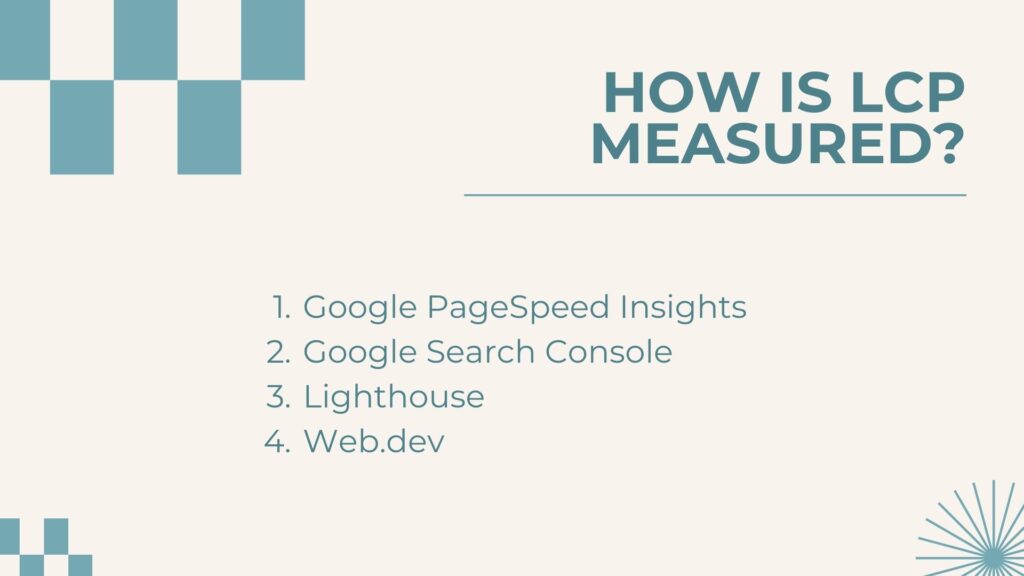
How Is LCP Measured?
LCP can be measured using various tools that analyze your website’s performance. Here are a few options:
1. Google PageSpeed Insights
This free tool provides a detailed breakdown of your Core Web Vitals, including your LCP score. It also offers recommendations for improvement.
2. Google Search Console
The Core Web Vitals report in Search Console gives you an overview of how your site performs based on real user data.
3. Lighthouse
Lighthouse is a developer tool built into Google Chrome that analyzes your website’s performance and provides insights into LCP and other metrics.
4. Web.dev
This tool, created by Google, helps you test your website and learn how to improve Core Web Vitals like LCP.
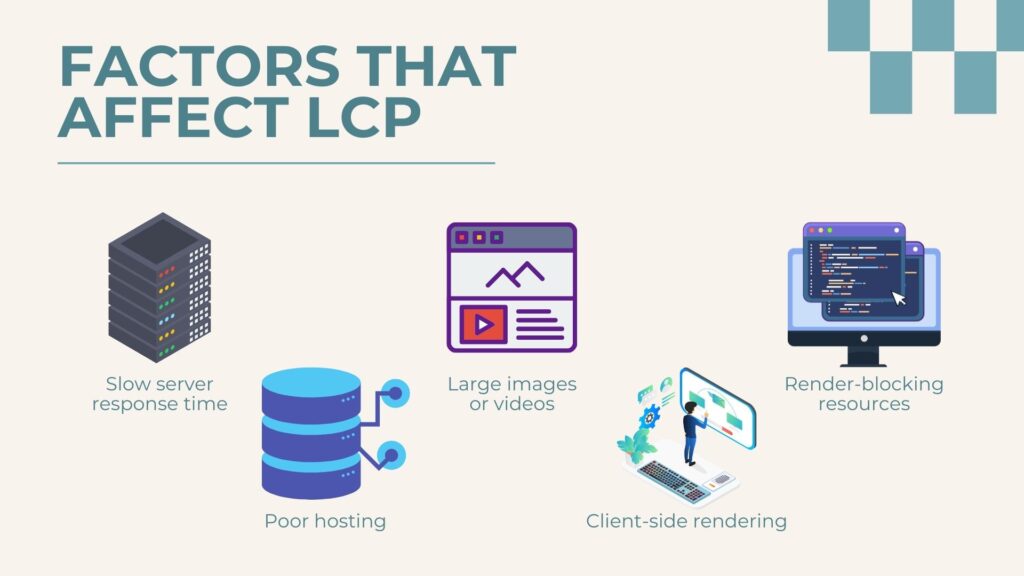
Factors That Affect LCP
Several factors can impact your LCP score, including:
1. Slow Server Response Time
If your server takes too long to respond to user requests, the main content on your page will load more slowly.
2. Large Images or Videos
High-resolution images and videos can take longer to load.
3. Render-Blocking Resources
CSS, JavaScript, and other resources that load before the main content can slow down your LCP.
4. Poor Hosting
Inadequate hosting solutions can lead to slower load times, especially during traffic spikes.
5. Client-Side Rendering
Webpages that rely heavily on JavaScript for rendering content can delay LCP, as the browser must process the code before displaying the main content.
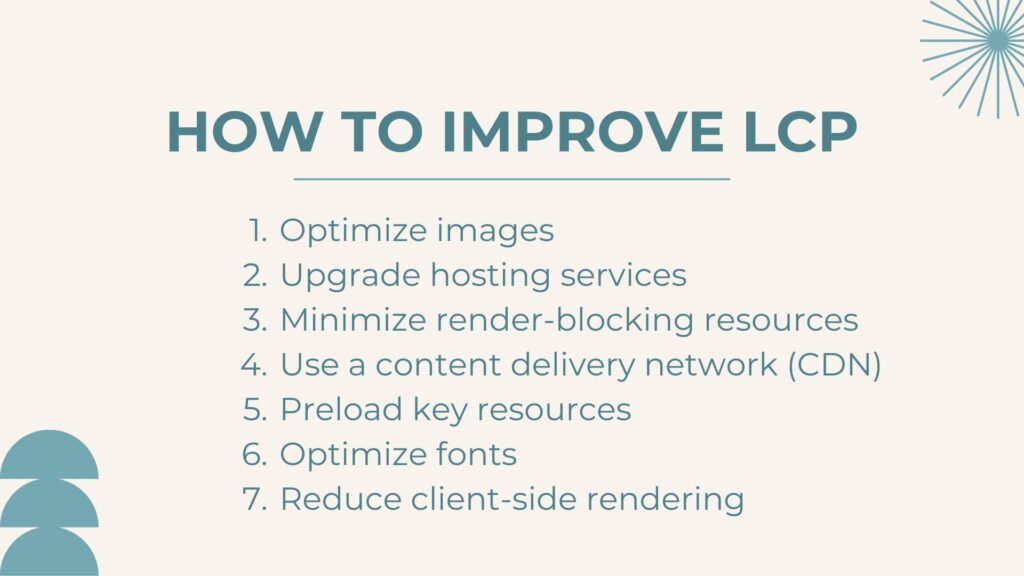
How to Improve LCP
If your LCP score needs improvement, here are some actionable steps to speed it up:
1. Optimize Images
Large images are one of the biggest culprits behind slow LCP scores. To fix this:
- Compress images using tools like TinyPNG or ImageOptim.
- Use modern image formats like WebP, which offer better compression without sacrificing quality.
- Implement lazy loading to load images only when they are about to appear on the screen.
2. Upgrade Hosting Services
If your website is hosted on a slow or unreliable server, upgrading to a better hosting provider can significantly improve load times. Look for hosting services that offer fast response times and content delivery networks (CDNs).
3. Minimize Render-Blocking Resources
Reduce or eliminate CSS and JavaScript files that block the rendering of your page. To do this:
- Minify CSS and JavaScript files to reduce their size.
- Use asynchronous loading for JavaScript to prevent it from delaying other resources.
4. Use a Content Delivery Network (CDN)
A CDN stores copies of your website on servers around the world, reducing the distance between users and your content. This improves load times, especially for international visitors.
5. Preload Key Resources
Tell the browser to prioritize loading important resources like fonts or hero images. This ensures the most critical content appears quickly.
6. Optimize Fonts
Custom fonts can slow down your LCP if they take too long to load. To optimize fonts:
- Use modern font formats like WOFF2.
- Host fonts locally instead of relying on third-party servers.
- Use font-display settings like font-display: swap; to show fallback text while the font loads.
7. Reduce Client-Side Rendering
If your site relies heavily on JavaScript, consider using server-side rendering (SSR) or static site generation (SSG) to speed up the loading process.
Check Your LCP
Largest Contentful Paint (LCP) is a vital metric for creating a fast, user-friendly website that ranks well in search results. By optimizing images, reducing render-blocking resources, and using tools like CDNs, you can achieve a faster LCP score and deliver a better experience for your audience. Remember, even small improvements in your LCP score can have a big impact on engagement and conversions.
Improving your website’s Core Web Vitals can help boost your outreach efforts. Make building high-quality backlinks even easier with Link Genius. Our automated campaigns can help you reach hundreds of relevant backlink sources in a snap. Learn more here.
